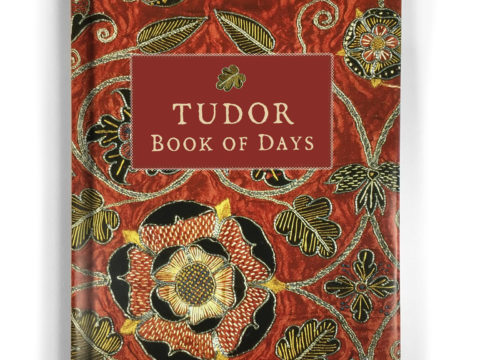James VI & I: Life Story
Chapter 2 : Education
Soon after his birth, James was entrusted to the care of John, Earl of Mar, and his Countess, Annabella Murray. The little boy was to be kept safe at Stirling, as the politics of the Scottish court became increasingly fraught.
In February of 1567, the house where Darnley was recuperating from an illness was blown up with gunpowder, and Darnley’s body (unmarked by the explosion) was found in the garden. Immediately, suspicion fell on the Earl of Bothwell, but Mary, either believing him to be innocent, or, perhaps herself involved in the scheme ( Mary’s innocence or guilt has sparked controversy for five hundred years), seemed reluctant to pursue the investigation thoroughly. Not only that, she permitted Bothwell, following a swift trial at which he was acquitted, to carry her crown and sceptre at the state opening of Parliament.
Shortly after, she visited James, but Mar refused to permit the baby to be taken out of Stirling – determined to safeguard the little prince. Events quickly unravelled for Mary, and she was forced to abdicate. James was crowned as King of Scotland on 29 th July 1567 at the age of 13 months.
James’ coronation was controversial – he was not immediately recognised as king by a significant proportion of Scots, let alone by foreign rulers. Even Protestant England was reluctant to involve itself with the deposition of a sovereign monarch. The ceremony, which took place in the Church of the Holy Rude (Holy Cross) in Stirling, was as Protestant as his christening had been Catholic, with no less a luminary than John Knox preaching the sermon.
The Regency government that was formed consisted largely of those lords who had certainly slaughtered David Riccio, and may well have had a hand in Darnley’s death. Chief amongst them was the Earl of Moray, instituted as Regent, with the Earl of Morton as Chancellor. Morton read James’ coronation oath on his behalf. The coronation over, James was returned to the care, first of the Earl of Mar, and, after Mar’s death in 1572, to that of the earl’s brother, Sir Alexander Erskine.
Lady Mar, described by John Knox as ‘a sweet titbit for the Devil’s mouth’ (which makes her sound rather more fun than Knox) was not an affectionate mother-substitute - James held her in ‘great awe’. However, such a role would not have been expected of her at the time. James’ physical and emotional needs would have been provided by his wet-nurse and his intimate servants such as the four rockers.
It was important for his advisors that James be brought up without any taint of Catholicism. Two tutors were appointed – the first, George Buchanan, was a leading light of the Scottish Reformation and a man of great experience and ability. As well as having worked with Queen Mary on her Latin, he had, at one time, been teacher to no less a philosophical hero than the Frenchman Michel de Montaigne. Buchanan, who was well into his sixties when he became James’ tutor, had very radical ideas on the role of kingship. He believed that the power and authority of the monarch was not unlimited, but was subject to the will of the ruled.
Whilst Buchanan undoubtedly influenced James strongly – the young prince became a prodigy of learning and intellectual skill – he completely failed to instil any idea of the limitation of monarchical power. According to Sir James Melville, whose memoirs provided much of our knowledge of the period, Buchanan was somewhat cantankerous and unforgiving in his old age.
On one occasion, having punished the king with a box on the ear, which led James to answer back, the boy was soundly beaten. The Countess of Mar chastised him for laying hands on the ‘Lord’s Anointed’ to which Buchanan replied that as he had ‘whipped the king’s arse’, she could kiss it if she chose. James later recalled Buchanan with respect, admiration for his learning, and a healthy dose of remembered fear – telling a minister that his approach caused the king to tremble because it reminded James of his old teacher.
Fortunately for James, Buchanan’s assistant was a much younger and more amenable character – Peter Young, who remained employed by James in various posts for many years, was more inclined to teaching by gentleness.
The result of James’ education was a man who could read and write in Scots (a Germanic language, similar to, but not the same as, English), Latin, French and Greek. He had studied history, philosophy and, most important in his tutors’ eyes, his religion. The Scottish Reformation had been Calvinist in nature, more radical than the Protestant Reformation in England, which many Calvinists felt to be barely better than Roman Catholicism. James, whether by nature or training, had a prodigious memory, and knew most of the Bible by heart – which enabled him to have the last word in almost any argument for the rest of his life.
It was not all book-learning. Like any young nobleman of the time, James learnt to ride, to hunt and to hawk with his school-room companions, chief of whom were the Earl of Mar’s son, John Erskine, and the Countess’ nephew, John Murray. Perhaps surprisingly in view of our ideas about Calvinism, Buchanan also taught the young prince to dance, which he did ‘with a very good grace', according to Melville. Despite this, James did not inherit any of the love or talent for music that his ancestors in both the Stewart and Tudor families had displayed.
James VI & I
Family Tree



